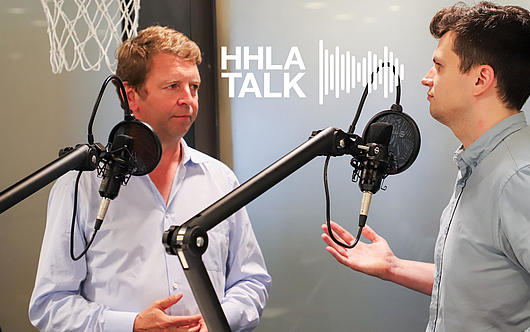
The EU states want to use the EU Taxonomy to achieve climate-neutral status by 2050 and to reduce greenhouse gas emissions by 55 percent by 2030. Anyone already pursuing a sustainable business model – such as HHLA – can use standardised calculations to prove how they are fulfilling the specifications.
Economy and ecology have more in common than sharing the same first letter. When it comes to climate change, sustainable business practices are now the basis for all business. But what does sustainability in business mean? This is now something that is regulated by the EU via its Taxonomy Regulation, which has outlined binding standards for large businesses since 2022. At its core are six environmental targets that companies are to support: climate change mitigation, climate change adaptation, sustainable use and protection of water and marine resources, transition to a circular economy, pollution prevention and control, and protection and restoration of biodiversity and ecosystems. A company can be said to engage in taxonomy-aligned business practices if it makes a significant contribution towards one of these environmental targets without having a negative impact on any of the others. It must also comply with international standards in terms of human rights and social issues, for example.
The idea behind the EU Taxonomy is that transparency with regard to companies’ commitment to environmentally friendly practices makes it easier for investors to identify sustainable capital investments. This should then result in more investments being diverted to sustainable companies and green technologies, while supporting the EU Green Deal. Consistent standards also help to prevent the risk of greenwashing by companies.
How are the criteria for sustainability activities assessed through the EU Taxonomy?
The company must make a substantial contribution to at least one of the six environmental targets (see below).
It must not have any significant detrimental effect on the other five environmental targets.
And it must ensure basic protections for employees and human rights.
Way above the industry average: 79 percent of HHLA revenue in 2023 is taxonomy-aligne
Using the clear evaluation criteria in the EU Taxonomy, HHLA is able to prove that it takes climate protection seriously. For example, 79 percent of its 2023 revenue is taxonomy-aligned, while for capital expenditure (CapEx), this figure rises to 87 percent. “These figures far outstrip the industry average in the transport sector. They show that the HHLA business model is very sustainable and that we don’t just apply these principles to individual pilot projects,” says Jan Hendrik Pietsch, Head of Sustainability at HHLA. “The high percentage of taxonomy-aligned capital expenditure shows that we will be investing in protecting the climate in future, too.”
The above-average values are also the result of transporting freight by rail, which is something that HHLA subsidiary Metrans does almost entirely with electric multi-system locomotives. Because shipping results in relatively low carbon emissions, “infrastructure for low-carbon shipping” is also classed by the EU as being advantageous for climate change mitigation. Here, the HHLA business model really shows off its advantages by dovetailing maritime shipping and rail transport, thus making a major contribution towards protecting the climate. “In applying the EU Taxonomy, we conducted a climate risk analysis and looked at how extreme weather events and climate models will affect our operational processes in 2050 at various locations,” says Pietsch. “The results showed that our existing infrastructure and suprastructure is very resilient.”

Further regulations in the pipeline
This means that HHLA is well-positioned to face the future. “Sustainability is firmly anchored in our corporate governance and management processes,” says Pietsch. It’s a good starting point because a whole host of new laws and regulations drawing on the Taxonomy will be passed in the coming year which will also drive the development towards more sustainable business practices. For example, the CSRD (Corporate Sustainability Reporting Directive) will establish the requirements for standardised sustainability reporting. As here too, data about environmental concerns, social issues and governance is to be made accessible to all stakeholders and practical for them to use, across all sectors.


